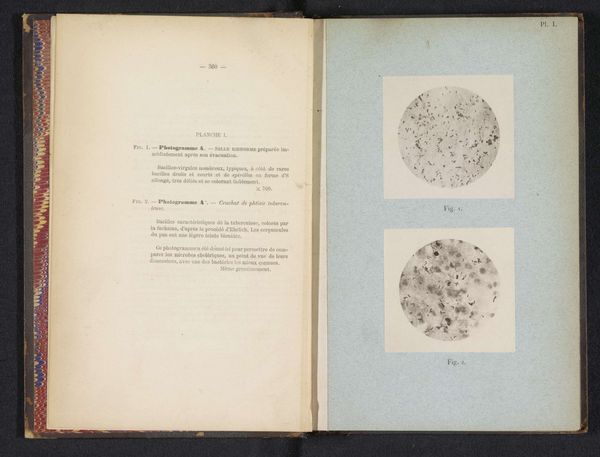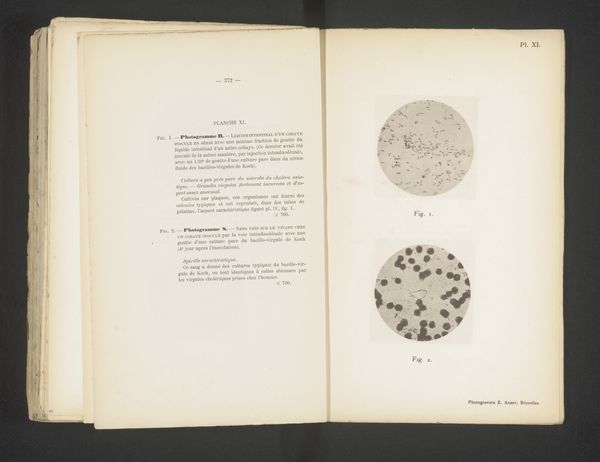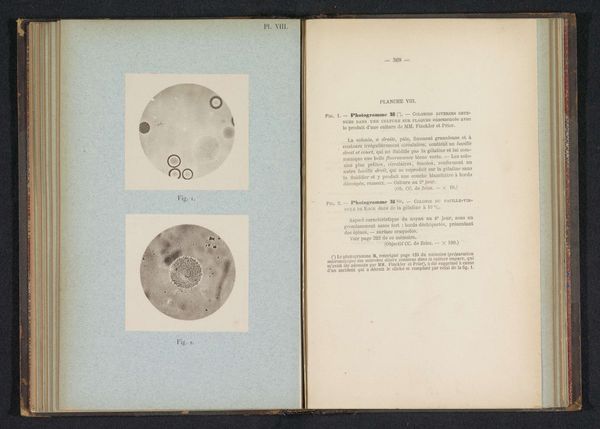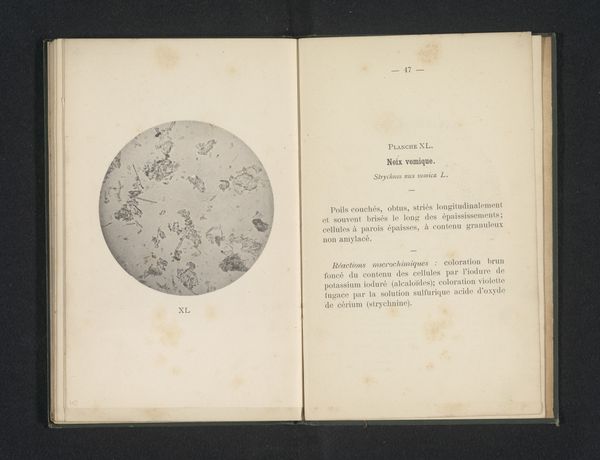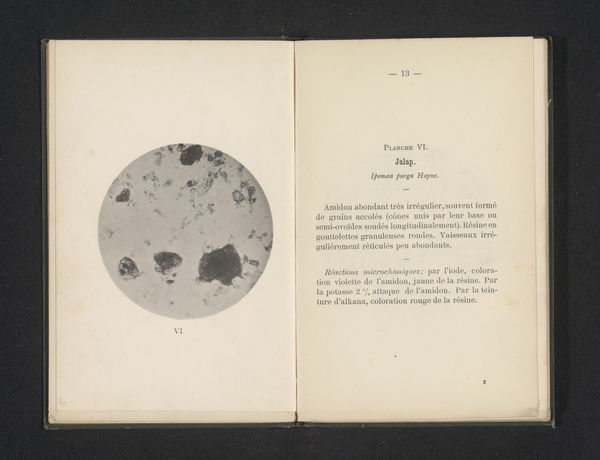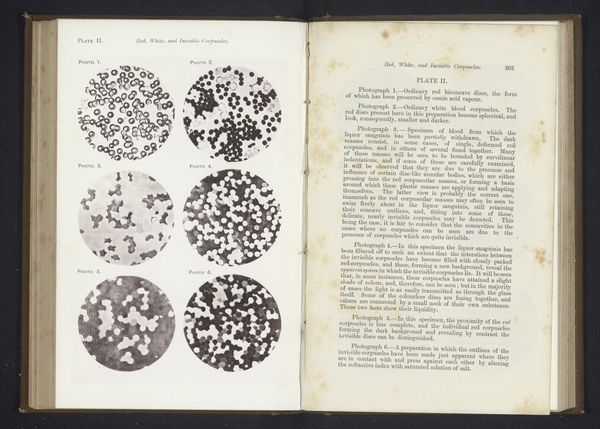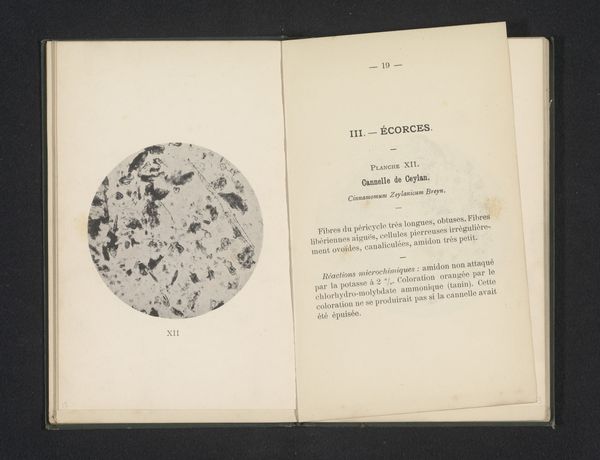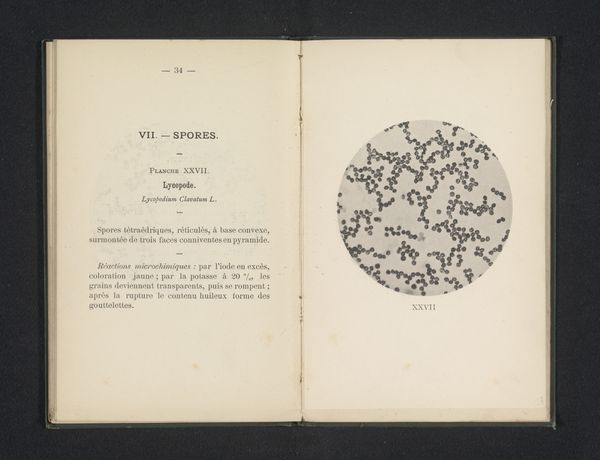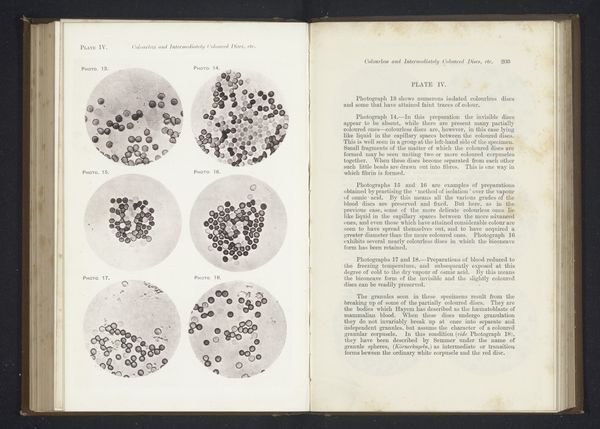
Microscoopopname van cholera en een fotoreproductie van een tekening daarvan before 1885
0:00
0:00
print, photography
# print
#
photography
Dimensions: height 243 mm, width 150 mm
Copyright: Rijks Museum: Open Domain
Curator: Today we're looking at an image from before 1885 called "Microscoopopname van cholera en een fotoreproductie van een tekening daarvan"—or "Microscopic picture of cholera and a photo reproduction of a drawing of it." It's created using print and photography by Émile van Ermengem. Editor: My first impression is one of stark simplicity, almost clinical detachment. The high contrast and minimalist composition really draw your eye to the patterns within the circles. Curator: Precisely. Émile van Ermengem, a pioneering bacteriologist, sought to visualize the invisible enemy, cholera, bringing it into the public consciousness through visual representation. This was vital for promoting sanitation and public health. Editor: And the form reinforces the function. Look at how the images are presented—isolated and magnified, like specimens under glass. The lack of color directs focus purely to the form and arrangement of these microscopic organisms, rendering a potentially terrifying subject almost… aesthetically interesting. Curator: Interesting indeed, especially considering the implications. Images like these played a significant role in shaping public understanding and fear of disease. Germ theory was still relatively new. The microscopic images allowed the public to imagine what cholera actually was, and thus to better understand germ theory itself. Editor: Right, so we have circles containing tiny shapes—lines, dots, a chaotic field versus the other almost elegantly scattered—and their formal arrangement produces two different effects. One a disquieting density, the other a sparse fragility. Curator: Absolutely, the visual disparity you noted likely reflects different stages of the cholera bacteria or perhaps variations in the preparation techniques employed. What the artist decided to photograph, how that photograph was displayed, and the public reception shaped the image’s efficacy. Editor: Reflecting on it, what's compelling is how scientific objectivity and artistic representation intertwine, offering us both data and a potent visual metaphor for the microscopic world. Curator: Exactly. These seemingly simple prints are a product of a culture grappling with new scientific paradigms, shaping public health policy. They exemplify art's profound capacity to inform and influence societal perception.
Comments
No comments
Be the first to comment and join the conversation on the ultimate creative platform.
